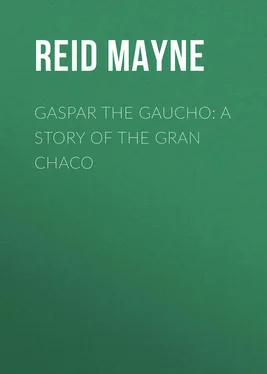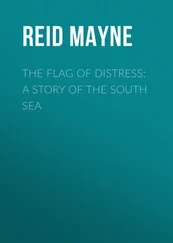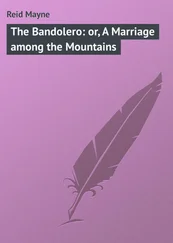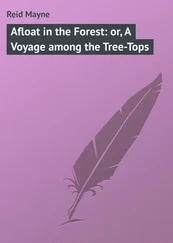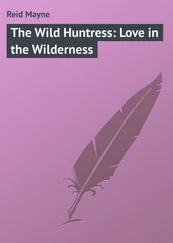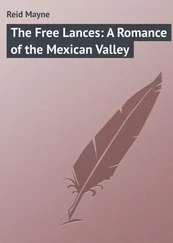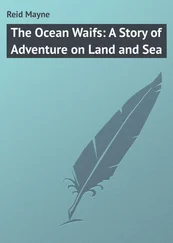Mayne Reid - Gaspar the Gaucho - A Story of the Gran Chaco
Здесь есть возможность читать онлайн «Mayne Reid - Gaspar the Gaucho - A Story of the Gran Chaco» — ознакомительный отрывок электронной книги совершенно бесплатно, а после прочтения отрывка купить полную версию. В некоторых случаях можно слушать аудио, скачать через торрент в формате fb2 и присутствует краткое содержание. Жанр: literature_19, foreign_antique, foreign_prose, на английском языке. Описание произведения, (предисловие) а так же отзывы посетителей доступны на портале библиотеки ЛибКат.
- Название:Gaspar the Gaucho: A Story of the Gran Chaco
- Автор:
- Жанр:
- Год:неизвестен
- ISBN:нет данных
- Рейтинг книги:3 / 5. Голосов: 1
-
Избранное:Добавить в избранное
- Отзывы:
-
Ваша оценка:
- 60
- 1
- 2
- 3
- 4
- 5
Gaspar the Gaucho: A Story of the Gran Chaco: краткое содержание, описание и аннотация
Предлагаем к чтению аннотацию, описание, краткое содержание или предисловие (зависит от того, что написал сам автор книги «Gaspar the Gaucho: A Story of the Gran Chaco»). Если вы не нашли необходимую информацию о книге — напишите в комментариях, мы постараемся отыскать её.
Gaspar the Gaucho: A Story of the Gran Chaco — читать онлайн ознакомительный отрывок
Ниже представлен текст книги, разбитый по страницам. Система сохранения места последней прочитанной страницы, позволяет с удобством читать онлайн бесплатно книгу «Gaspar the Gaucho: A Story of the Gran Chaco», без необходимости каждый раз заново искать на чём Вы остановились. Поставьте закладку, и сможете в любой момент перейти на страницу, на которой закончили чтение.
Интервал:
Закладка:
They exchange thoughts on the subject – the child equally perplexed with the parent; and after an interval passed in conjecturing, all to no purpose, Halberger is about to turn and ride home again, when it occurs to him he had better find out in what direction the Indians went away from their village.
There is no difficulty in discovering this; the trail of their ridden horses, still more that of their pack animals, is easily found and followed. It leads out from the village at the opposite end from that by which they themselves entered; and after following it for a mile or so along the river’s bank, they see that it takes an abrupt turn across the pampa . Up to this point it has been quite conspicuous, and is also beyond; for although it is anything but recent, no rain has since fallen, and the hoof-prints of the horses can be here and there distinguished clean cut on the smooth sward, over which the mounted men had gone at a gallop. Besides, there is the broad belt of trodden grass where the pack animals toiled more slowly along; and upon this bits of broken utensils, with other useless articles, have been dropped and abandoned, plainly proclaiming the character of the cavalcade.
Here Halberger would halt, and turn back, but for a remembrance coming into his mind which hinders, at the same time urging him to continue on. In one of his hunting excursions he had been over this ground before, and remembers that some ten miles further on a tributary stream flows into the Pilcomayo. Curious to know whether the departing Tovas have turned up this tributary, or followed the course of the main river, he determines to proceed. For glancing skyward, he sees that the sun is just crossing the meridian, and knows he will have no lack of time before darkness can overtake him. The circumstances and events, so strange and startling, cause him to forget that promise made to his wife – soon to be back at the estancia .
Spurring his horse, and calling on Francesca to follow, he starts off again at a brisk gallop; which is kept up till they draw bridle on the bank of the influent stream.
This, though broad, is but shallow, with a selvedge of soft ooze on either side; and on that where they have arrived the mud shows the track of several hundred horses. Without crossing over, Halberger can see that the Indian trail leads on along the main river, and not up the branch stream.
Again he is on the balance, to go back – with the intention of returning next day, accompanied by Caspar, and making further search for the missing Indians – when an object comes under his eye, causing him to give a start of surprise.
It is only the track of a horse; and strange that this should surprise him, among hundreds. But the one on which he has fixed his attention differs from all the rest in being the hoof-print of a shod horse, while the others are as Nature made them. Still even this difference would not make so much impression upon him were the tracks of the same age . Himself skilled as any Indian in the reading of pampas sign, at a glance he sees they are not. The hoof-marks of the Tovas horses in their travelling train are all quite three weeks old; while the animal having the iron on its heels, must have crossed over that stream within the week.
Its rider, whoever he was, could not have been in the company of the departing Tovas; and to him now regarding the tracks, it is only a question as to whether he were a white man, or Indian. Everything is against his having been the former, travelling in a district tabooed to the palefaces, other than Halberger and his – everything, save the fact of his being on the back of a shod horse; while this alone hinders the supposition of the animal being bestridden by an Indian.
For a long while the hunter-naturalist, with Francesca by his side, sits in his saddle contemplating the shod hoof-prints in a reverie of reflection. He at length thinks of crossing the tributary stream, to see if these continue on with the Indian trail, and has given his horse the spur, with a word to his daughter to do likewise, when voices reach his ear from the opposite side, warning him to pull in again. Along with loud words and ejaculations there is laughter; as of boys at play, only not stationary in one place, but apparently moving onward, and drawing nearer to him.
On both sides of the branch stream, as also along the banks of the river, is a dense growth of tropical vegetation – mostly underwood, with here and there a tall moriché palm towering above the humbler shrubs. Through this they who travel so gleefully are making their way; but cannot yet be seen from the spot where Halberger has halted. But just on the opposite bank, where the trail goes up from the ford, is a bit of treeless sward, several acres in extent, in all likelihood, kept clear of undergrowth by the wild horses and other animals on their way to the water to drink. It runs back like an embayment into the close-growing scrub, and as the trail can be distinguished debouching at its upper end, the naturalist has no doubt that these joyous gentry are approaching in that direction.
And so are they – a singular cavalcade, consisting of some thirty individuals on horseback; for all are mounted. Two are riding side by side, some little way ahead of the others, who follow also in twos – the trail being sufficiently wide to admit of the double formation. For the Indians of pampa and prairie – unlike their brethren of the forest, do not always travel “single file.” On horseback it would string them out too far for either convenience or safety. Indeed, these horse Indians not unfrequently march in column, and in line.
With the exception of the pair spoken of as being in the advance, all the others are costumed, and their horses caparisoned, nearly alike. Their dress is of the simplest and scantiest kind – a hip-cloth swathing their bodies from waist to mid-thigh, closely akin to the “breech-clout” of the Northern Indian, only of a different material. Instead of dressed buckskin, the loin covering of the Chaco savage is a strip of white cotton cloth, some of wool in bands of bright colour having a very pretty effect. But, unlike their red brethren of the North, they know nought of either leggings or moccasin. Their mild climate calls not for such covering; and for foot protection against stone, thorn, or thistle, the Chaco Indian rarely ever sets sole to the ground – his horse’s back being his home habitually.
Those now making way through the wood show limbs naked from thigh to toe, smooth as moulded bronze, and proportioned as if cut by the chisel of Praxiteles. Their bodies above also nude; but here again differing from the red men of the prairies. No daub and disfigurement of chalk, charcoal, vermilion, or other garish pigment; but clear skins showing the lustrous hue of health, of bronze or brown amber tint, adorned only with some stringlets of shell beads, or the seeds of a plant peculiar to their country.
All are mounted on steeds of small size, but sinewy and perfect in shape, having long tails and flowing manes; for the barbarism of the clipping shears has not yet reached these barbarians of the Chaco.
Nor yet know they, or knowing, they use not saddle. A piece of ox-hide, or scrap of deer-skin serves them for its substitute; and for bridle a raw-hide rope looped around the under jaw, without head-strap, bittless, and single reined, enabling them to check or guide their horses, as if these were controlled by the cruellest of curbs, or the jaw-breaking Mameluke bitt.
As they file forth two by two into the open ground, it is seen that there is some quality and fashion common to all; to wit, that they are all youths – not any of them over twenty – and that they wear their hair cropped in front, showing a square line across the forehead, but left untouched on the crown and back of the head. There it falls in full profuseness, reaching to the hips, and in the case of some mingling with the tails, of their horses.
Читать дальшеИнтервал:
Закладка:
Похожие книги на «Gaspar the Gaucho: A Story of the Gran Chaco»
Представляем Вашему вниманию похожие книги на «Gaspar the Gaucho: A Story of the Gran Chaco» списком для выбора. Мы отобрали схожую по названию и смыслу литературу в надежде предоставить читателям больше вариантов отыскать новые, интересные, ещё непрочитанные произведения.
Обсуждение, отзывы о книге «Gaspar the Gaucho: A Story of the Gran Chaco» и просто собственные мнения читателей. Оставьте ваши комментарии, напишите, что Вы думаете о произведении, его смысле или главных героях. Укажите что конкретно понравилось, а что нет, и почему Вы так считаете.
